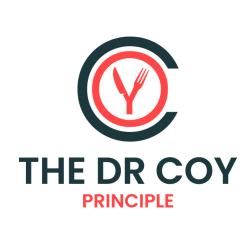Achieve optimal athletic performance with Dr Coy’s sugars
Athletes that push their bodies to the limit need to fuel up with the right energy. That means choosing the right type of carbohydrate. Dr Coy’s sugars are a healthier alternative to conventional carbohydrates and support optimal performance. In addition, Dr Coy’s sugars help to prevent injuries caused by stiffness of proteins e.g. ligaments and muscles.
Most athletes are encouraged to follow a high carbohydrate diet for top performance, and to eat plenty of protein to help their bodies repair and rebuild after exercise. But many athletes don’t realize that the wrong sugars and too much protein can have some harmful effects. The consumption of sugars and carbohydrates which lead to high blood glucose levels increase the chemical modification of proteins by sugars – the so-called advanced glycation end products (AGE’s). Flexible proteins like elastin are no longer elastic if glucose is attached to it. Stiffness of proteins (like ligaments and muscles) increase the risk of ruptures – ligament ruptures as well as torn muscle fibre. Injuries caused by sugar related protein modifications are not only painful but can be difficult to recover from.
The dangers of high blood glucose levels from consuming too much protein and too many carbohydrates
A low carbohydrate diet is one way to keep blood glucose levels stable and maintain the optimal amount of body fat. However, when the body burns protein for energy instead of carbohydrates, this creates amino acids which produce ammonia when metabolised. Ammonia is toxic, which means diets that are too high in protein can cause serious health problems.
A diet rich in protein with less carbohydrates and sugars reduces the risk of sugar related injuries, but increases the production of toxic ammonia, when the amino acids are being used for energy release. By contrast, sugars don’t release toxins, which makes them a great source of energy for athletes… continue reading
The problem is that classic sugars cause blood glucose levels to rise, which can create a sugar coating on proteins in the blood and hinder oxygen transportation around the body. In muscles, glucose attached to proteins makes connective tissues less flexible, which can cause muscle and ligament injuries.
Boosting energy using classic sugar products raises blood sugar levels and reduces flexibility in muscles, tendons and other connective tissues, putting them at risk of injury. Eating simple carbohydrates found in sugary drinks and snacks can also cause dental issues among athletes.
Dr Coy’s sugars as an alternative energy source for athletes
When you ditch classic carbohydrates and switch to one of Dr Coy’s sugars like galactose or trehalose to maximise your energy output, it’s possible to avoid problematic excess ammonia.
Athletes need plenty of oxygen to reach their muscles, but this can be inhibited by the glucose found in classic sugars. One of Dr Coy’s sugars, trehalose, is completely composed of glucose, and doesn’t spike blood sugar levels, so more oxygen can be transported to muscles. Trehalose is a smart way to consume glucose by avoiding high levels of blood glucose and insulin.
Sports drinks and energy bars that contain classic sugars may provide a quick energy boost, but they can also cause health problems, reduced performance, and injuries when consumed over the long term. Dr Coy’s sugars can help athletes maximise performance without compromising their wellbeing… continue reading
Consumption of sugars leading to high blood glucose levels cause chemical modifications in haemoglobin by sugars. Glucose attached to haemoglobin is being routinely measured in diabetes patients (HbA1c), but can also be used for monitoring the nutrition related performance of athletes. Haemoglobin is the protein transporting the oxygen in the blood vessels. The brain and other organs have a major impact on the performance of oxygen transport, which is the efficient uptake of oxygen in the lungs and the efficient delivery of oxygen to muscles. The more glucose is attached to haemoglobin, the less efficient the uptake of oxygen is in the lungs and the delivery of oxygen to muscles and other organs. Therefore, the glucose coating the haemoglobin leads to inefficient oxygen transport. This immensely limits performance, but it can be improved by using Dr Coy’s sugars to avoid high blood glucose levels and the glucose coating of haemoglobin.
Use Dr Coy’s sugar galactose to activate your mitochondria
Many sports are dependent on an oxidative energy release using mitochondria. The higher the oxidative energy release, the better the performance. The switch from this aerobic energy release towards an oxygen independent energy release is characterized by the VO2max – the maximal performance in this aerobic condition. As soon as not enough oxygen is available to release sufficient energy, an oxygen independent metabolism for energy release is being started – the fermentation of glucose to lactic acid. Muscles start to produce lactic acid, and this can be measured by a blood test. The slower the muscle starts the fermentation and lactic acid production, the longer a muscle can perform on the long term. In the short term, muscles are able to release energy by fermentation of glucose to lactic acid, a kind of turbo boost, which helped our ancestors survive critical fight and flight situations. Except for a few sports like 100m sprints, most sports depend on performance in aerobic conditions, or a combination of performance in aerobic conditions and short-term fermentation e.g., sports like football, tennis etc.
The different effects of galactose and glucose
Each sugar has a very different effect on the metabolism. Glucose can easily be used for fermentation metabolism. Galactose, on the other hand, must first be converted into glucose to be used for fermentation metabolism. To do this, the cell must invest as much energy as is subsequently released. The bottom line is that galactose provides no energy when it is used for fermentation. Therefore, the cell has no choice but to reactivate the mitochondria (combustion engines) to obtain energy from galactose. As a result of the activation of the combustion engines, the mobilisation and burning of fat is also increased.
Study results show that the consumption of galactose while still eating increases fat mobilisation and fat burning in overweight people. For biochemical reasons, galactose forces the use of mitochondria which increases the use and burning of fats in the body. Therefore, galactose can be used to train the mitochondria and it’s use of energy release by oxidative metabolism (Oxidative Phosphorylation)… continue reading
Due to this, galactose is an ideal sugar to support training with ketogenic diet or fasting. Both ketogenic diet and fasting exhaust the glucose deposits (glycogen) in the body and cause an oxidative metabolism with the mitochondria. The combination of galactose with ketogenic diet and fasting can be exploited to improve the training of an oxidative metabolism. An optimized oxidative metabolism is the basis for maximum performance in aerobic conditions (VO2max). This promotes a late switch to a fermentative, oxygen independent glucose fermentation leading to a big advantage in sports competition.
Dr Coy’s sugar mixtures can be used to improve training. Tagatose should be integrated in the training phase because tagatose stabilizes blood glucose levels even when other sugars that raise blood sugar levels are consumed, because tagatose slows down the uptake of other sugars. Furthermore, tagatose is a fuel for good colon bacteria producing a short fatty acid (butyrate) which further improves aerobic metabolism as well as suppresses inflammation.
In Dr Coy’s sugar mixes for sports competitions, tagatose should be replaced because the energy content is low. Ribose, a sugar which is a direct precursor for ATP should be integrated instead. In addition, trehalose as a glucose source and isomaltulose as a source for glucose and fructose delivers sugars for energy release.
Using Dr Coy’s sugars to optimise sports performance
- Create your own sports drinks using water and Dr Coy’s sugars for optimal training as well as to boost energy during competition without the side effects of classic sugar.
- Choose foods made with carbohydrates that increase blood glucose slowly, and minimise your classic sugar intake, for a slower and more stable energy release to maximize endurance.
- Swap out classic sugar in caffeinated drinks for an alternative using Dr Coy’s sugars.
- For optimizing oxidative metabolism with the mitochondria and its fat burning effect, choose galactose — which forces the mitochondria to be active and helps keep blood sugar levels stable to promote maximum performance under aerobic conditions (VO2max).
Our recipes page is packed with ideas for incorporating Dr Coy’s sugars into your diet.
Learn More…
Further reading on Dr Coy’s sugars and sport
- Harper LD, Stevenson EJ, Rollo I, Russell M. The influence of a 12% carbohydrate-electrolyte beverage on self-paced soccer-specific exercise performance. J Sci Med Sport. 2017 Dec
- Oosthuyse T, Carstens M, Millen AM. Ingesting Isomaltulose Versus Fructose-Maltodextrin During Prolonged Moderate-Heavy Exercise Increases Fat Oxidation but Impairs Gastrointestinal Comfort and Cycling Performance. Int J Sport Nutr Exerc Metab. 2015 Oct
*Please note: This study proves the benefits of Isomaltulose for athletes. However, it should be noted that due to the gastrointestinal discomfort caused, isomaltulose by itself should not be used to replace classic sugars. Isomaltulose should be consumed as part of a precise mixture of Dr Coy’s sugars to support athletes and maintain gastrointestinal comfort.
- Li, M., Zhao, X., Yong, H. et al. Transketolase promotes colorectal cancer metastasis through regulating AKT phosphorylation. Cell Death Dis 13, 99 (2022).
- Hamada N, Wadazumi T, Hirata Y, Kuriyama M, Watanabe K, Watanabe H, Hongu N, Arai N. Single Ingestion of Trehalose Enhances Prolonged Exercise Performance by Effective Use of Glucose and Lipid in Healthy Men. Nutrients. 2021 Apr 24
- Suzuki Y, Sato K, Arai N, Endo S. Influence of Trehalose Mouth Rinse on Anaerobic and Aerobic Exercise Performance. Natural Product Communications. 2020
Honma Y, Sato-Morita M, Katsuki Y, Mihara H, Baba R, Hino K, Kawashima A, Ariyasu T, Harada M. Trehalose alleviates oxidative stress-mediated liver injury and Mallor-Denk body formation via activating autophagy in mice. Med Mol Morphol. 2021 Mar - Wadazumi T, Watanabe K, Watanabe H, Yokoyama H, Hongu N, Arai N. Effects of a Single Ingestion of Trehalose during Prolonged Exercise. Sports (Basel). 2019 Apr 29
-
O’Hara JP, Carroll S, Cooke CB, Morrison DJ, Preston T, King RF. Preexercise galactose and glucose ingestion on fuel use during exercise. Med Sci Sports Exerc. 2012 Oct
-
Odell OJ, Impey SG, Shad BJ, Podlogar T, Salgueiro RB, Rowlands DS, Wallis GA. Oxidation of independent and combined ingested galactose and glucose during exercise. J Appl Physiol (1985). 2022 Nov 1
- Kase ET, Nikolić N, Bakke SS, Bogen KK, Aas V, Thoresen GH, Rustan AC. Remodeling of oxidative energy metabolism by galactose improves glucose handling and metabolic switching in human skeletal muscle cells. PLoS One. 2013;8(4)
Get in touch with Intelligent Sugar
Got a question about Dr Coy’s sugars? Contact info@intelligentsugar.info
If you have a question about a specific health condition, please speak to your doctor.

